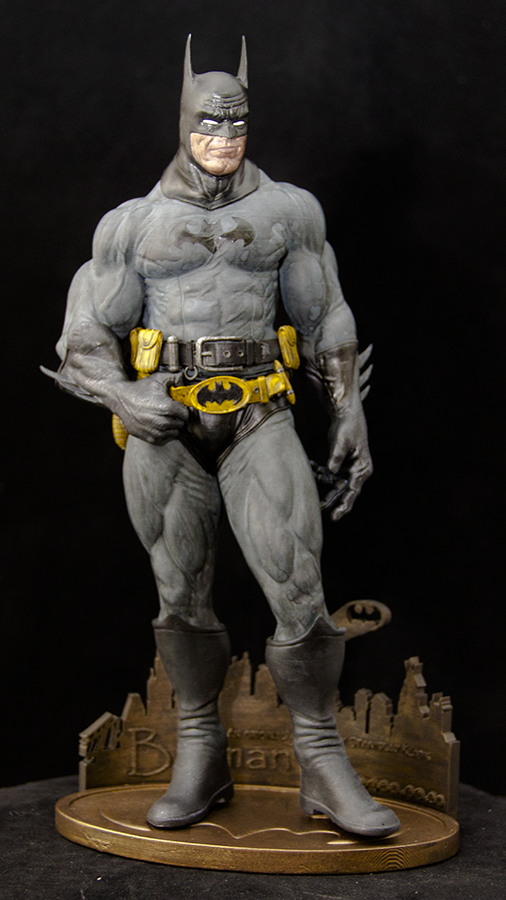
With 3D printing, the technology can leave a lot to be desired. While this can be expected for a technology which only burst onto the scene, as far as at-home use goes, a few year ago, there are still many flaws which need to be addressed. When you think of consumer-level 3D printing, you think of two technologies: fused filament fabrication (FFF) and stereolithography (SLA). Currently, although anything can change, the leaders of these two types, at least at the consumer level, are MakerBot (FFF) and FormLabs (SLA). Both of these brands, like Bruce Wayne in Batman, are constantly striving to better themselves, show their unique abilities, and ultimately win out.
In what I’m sure FormLabs would love for potential customers to see as a metaphor for their product, one man, named Jason Spiller, has gone and 3D printed an incredible model of Batman. Using designs by a self-taught 3D modeler from the Czech Republic, named Stanislav Klabik, he 3D printed out an extremely detailed model of ‘The Caped Crusader’, and then proceeded to paint it in extreme detail as well. After getting the design from Klabik, Spiller says he just had to make it “3D print ready” before sending it off to his Form 1+ 3D printer. Once printed, he had to spend ample time post processing and painting the model. As you can see, the results are quite phenomenal.
“The model was very high poly which I believe [Klabik] produced using 3ds Max and Zbrush,” Spiller tells 3DPrint.com. “It was not designed to be printed so I had to heavily rework the model to make it printable. The base section was an element created by myself to frame the main model. The model was printed in several sections at the 0.05mm setting using the Form1+, and the base section was printed at the 0.1mm setting. I painted the sections separately using a combination of acrylic paints and inks, then glued them together and applied a final wash.”
Spiller runs a small company in Northumberland, UK, called Formwurx, which specializes in doing consulting work and providing advisory services to schools and colleges looking to enter into the world of 3D printing, as well as “producing high quality custom prints of 3D models produced by designers, architects and engineers.”
This latest model of Batman certainly shows the potential that the Form 1+ 3D printer has. Unless examined closely it would be hard to even tell that this model wasn’t created through more traditional manufacturing methods such as injection molding.
What do you think about this latest design? Have you made similarly detailed prints on your SLA-based 3D printer? Discuss in the 3D Printed Batman forum thread on 3DPB.com. Check out some more photos below.